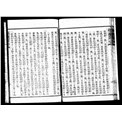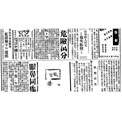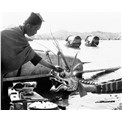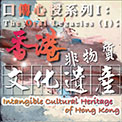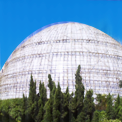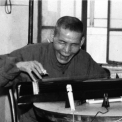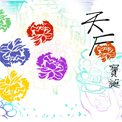-
History & Society
- Education in Pre-war Hong Kong
- History of Taikoo Sugar Refinery
- Hong Kong Products Exhibition
- Local Festivals Around the Year
- Post-war Industries
- Pre-war Industry
- The Hong Kong Jockey Club Archives
- Tin Hau Festival
- Memories We Share: Hong Kong in the 1960s and 1970s
- History in Miniature: The 150th Anniversary of Stamp Issuance in Hong Kong
- A Partnership with the People: KAAA and Post-war Agricultural Hong Kong
- The Oral Legacies (I) - Intangible Cultural Heritage of Hong Kong
- Hong Kong Currency
- Hong Kong, Benevolent City: Tung Wah and the Growth of Chinese Communities
- The Oral Legacies Series II: the Representative List of the Intangible Cultural Heritage of Hong Kong
- Braving the Storm: Hong Kong under Japanese Occupation
- A Century of Fashion: Hong Kong Cheongsam Story
Geography & EnvironmentArt & Culture- Calendar Posters of Kwan Wai-nung
- Festival of Hong Kong
- Ho Sau: Poetic Photography of Daily Life
- Hong Kong Cemetery
- Sketches by Kong Kai-ming
- The Culture of Bamboo Scaffolding
- The Legend of Silk and Wood: A Hong Kong Qin Story
- Journeys of Leung Ping Kwan
- From Soya Bean Milk To Pu'er Tea
- Applauding Hong Kong Pop Legend: Roman Tam
- 他 FASHION 傳奇 EDDIE LAU 她 IMAGE 百變 劉培基
- A Eulogy of Hong Kong Landscape in Painting: The Art of Huang Bore
- Imprint of the Heart: Artistic Journey of Huang Xinbo
- Porcelain and Painting
- A Voice for the Ages, a Master of his Art – A Tribute to Lam Kar Sing
- Memories of Renowned Lyricist: Richard Lam Chun Keung's Manuscripts
- Seal Carving in Lingnan
- Literary Giant - Jin Yong and Louis Cha
-
History & SocietyGeography & EnvironmentArt & Culture
-
View Oral History RecordsFeatured StoriesAbout Hong Kong Voices
-
Hong Kong MemoryThe Oral Legacies Series II: The Representative List of the Intangible Cultural Heritage of Hong KongRecently Visited
The Historical Lineage of the Zhengyi School in Taoism
Taoism in China has a history of 2,000 years. Tianshi Dao (the Way of Heavenly Masters), also known as Zhengyi (Orthodox Unity) Taoist belief, first emerged during the last years of the Eastern Han dynasty (25 - 220), and became popular among the plebeians when it was endorsed as the “orthodox” school in the 10th century. Priests of the Tianshi Dao were then charged with the responsibility of conducting rituals for invoking blessings from the deities, stemming natural disasters etc., on occasions like local temple festivities and imperial ceremonies of sacrifice. By the Jurchen Jin and Yuan dynasties (1115 - 1368), the Quanzhen (Complete Perfection) school rose to prominence. The priests belonging to this school would practice monasticism and stringently observe the religious rules. But on the other hand, most of the priests in the Tianshi Dao maintained a secular lifestyle and lived with their families. Some folk Zhengyi Taoists priests would only put on their Taoist robes when they were employed to conduct rituals for the festivals of deities, or hold services for funerals, burials, etc. The 38th successor of the Heavenly Master based in Longhushan in Jiangxi Province, Zhang Yucai (? - 1316) was conferred the title “Nominal Head of the Zhengyi School” by the Mongol court of Yuan in the 8th year of the Dade reign (1304) of the Yuan dynasty. He held the Tallies and Registers of the Three Mountains (Longhushan, Maoshan, and Gezaoshan). So slowly, many schools in southern China practising the Taoist tradition of tally and register were merged to become the Zhengyi school, and the altar in the headquarters of the Heavenly Master of Longhushan was upheld as the Principal Altar of All Schools. In brief, Zhengyi and Quanzhen are the two mainstream schools in the Taoist system.
The Taoist ritual tradition of the Zhengyi school in Hong Kong was in the same lineage as that of the Pearl River Delta during the Qing dynasty and the Republican period; and in Hong Kong, there are two ritual systems practised separately in the New Territories and in the urban areas. That in the New Territories is primarily practised in the villages, where the priests conduct rituals of zhai (retreat), jiao and gongde (ritual for merit). The other division serving the urban areas used to cover the fishing community of the seafront areas of Yau Ma Tei, Shau Kei Wan, Hang Hau and Hung Hom, and their rituals catered for the qingtan (celebratory functions, or “red” occasions), and the huangtan (funeral services, or “white” occasions). Today, the Zhengyi Taoist priests of the urban division are hired mainly to conduct funeral rituals in funeral parlours to assist the departed soul to enter the afterlife. The Cantonese people commonly called Zhengyi Taoist priests the “nahm mouh” masters.
Photos
Copyright © 2012 Hong Kong Memory. All rights reserved.






